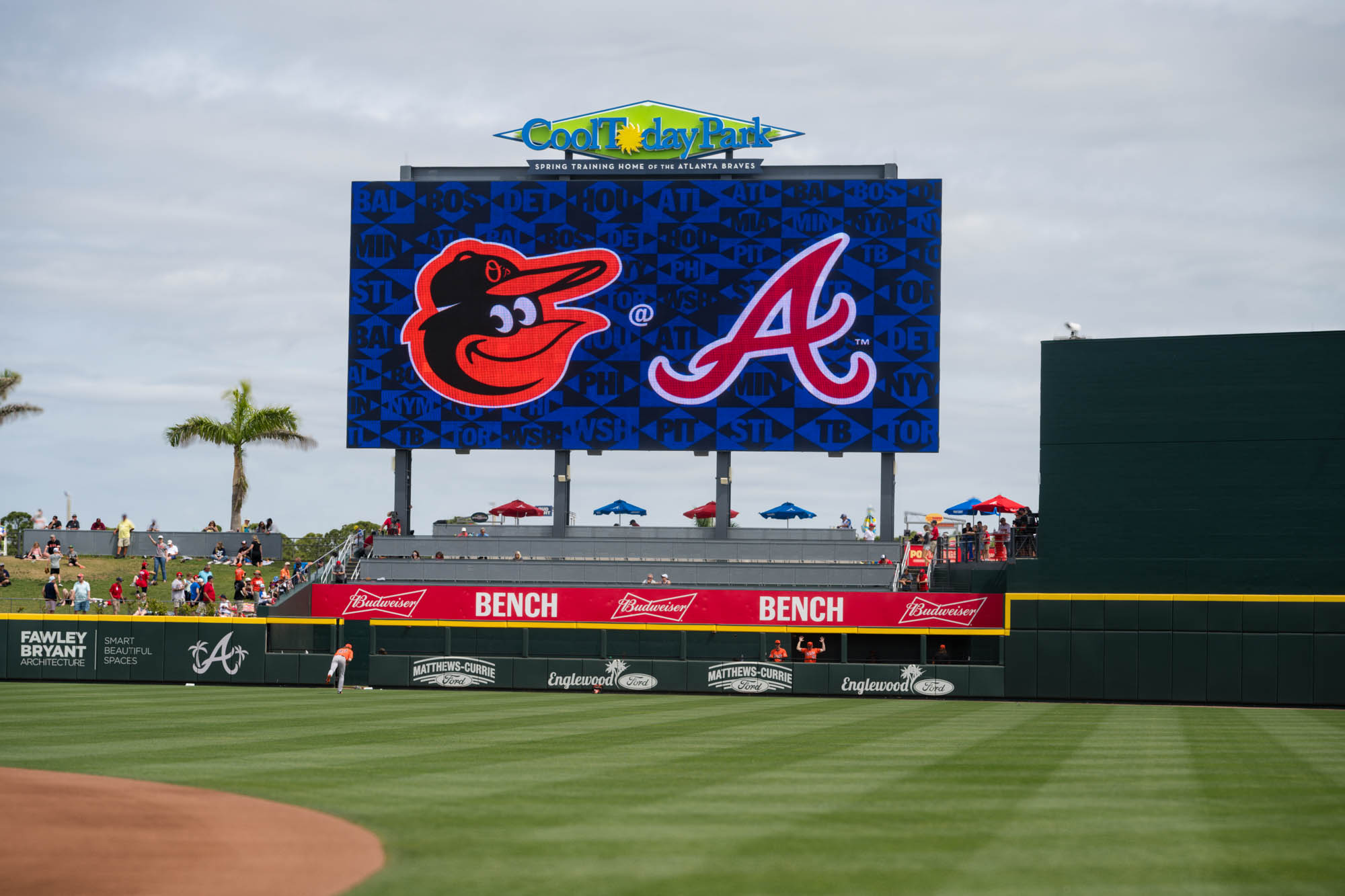Every spring, the Baltimore Orioles and Atlanta Braves touch down in Sarasota to prepare for the coming season.
THE DUGOUT
The Baltimore Orioles flit and fidget around the road dugout of CoolToday Park,like horses at the gates of the race track. Some crack jokes and chat with staff members, others prepare for battle in silence.
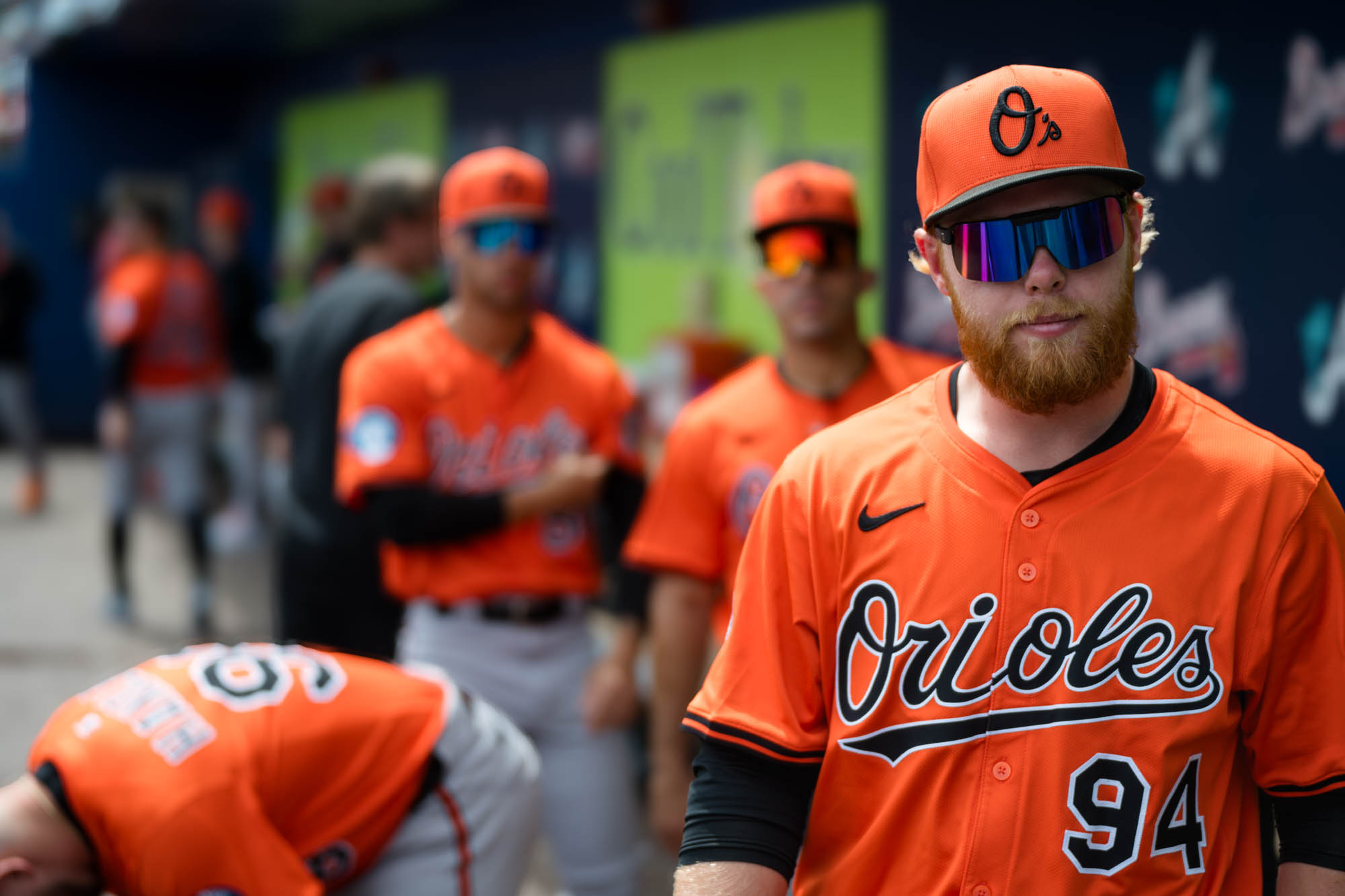
All-Star catcher Adley Rutschman trades his face mask and shin guards for a batting helmet and gloves. Starting pitcher Charlie Morton paces back and forth, his right arm covered in a jacket. It’s the same arm that has been throwing fastballs to Major League batters since 2008. It’s March 23, 2025, the final Grapefruit League game of the Orioles’ Spring Training and for the 41-year-old Morton, who signed a one-year contract with the Orioles in free agency, perhaps the final Spring Training game of his career. There is the same nervous energy found in every dugout of every ball game across every level of the sport and it’s here today. For although the outcome of the game is inconsequential, the action, what happens in it, is not. Major League Baseball’s regular season will stretch out over six long months, but the six weeks of Spring Training prior set the tone for the rest of the season. Positional battles are won and lost, big league rosters made and cut. For some players, like Rutschman or Morton, Spring Training is a place to merely perfect their craft. In today’s start Morton will only pitch two innings, allowing three earned runs on five hits while striking out just one batter—a disastrous affair in the regular season, but an afterthought in Spring Training.
ON THE FIELD
For most players in the Grapefruit League, their performance in these fleeting six weeks has significant implications for not only their seasons, but their careers. Professional baseball is, per capita, the hardest sport to make it to the highest in level. To be signed to or drafted by a MLB team is not to be anointed to the big league squad, but rather to be invested in, with varying degrees of hope that one day, you might be able to contribute at the big league level.
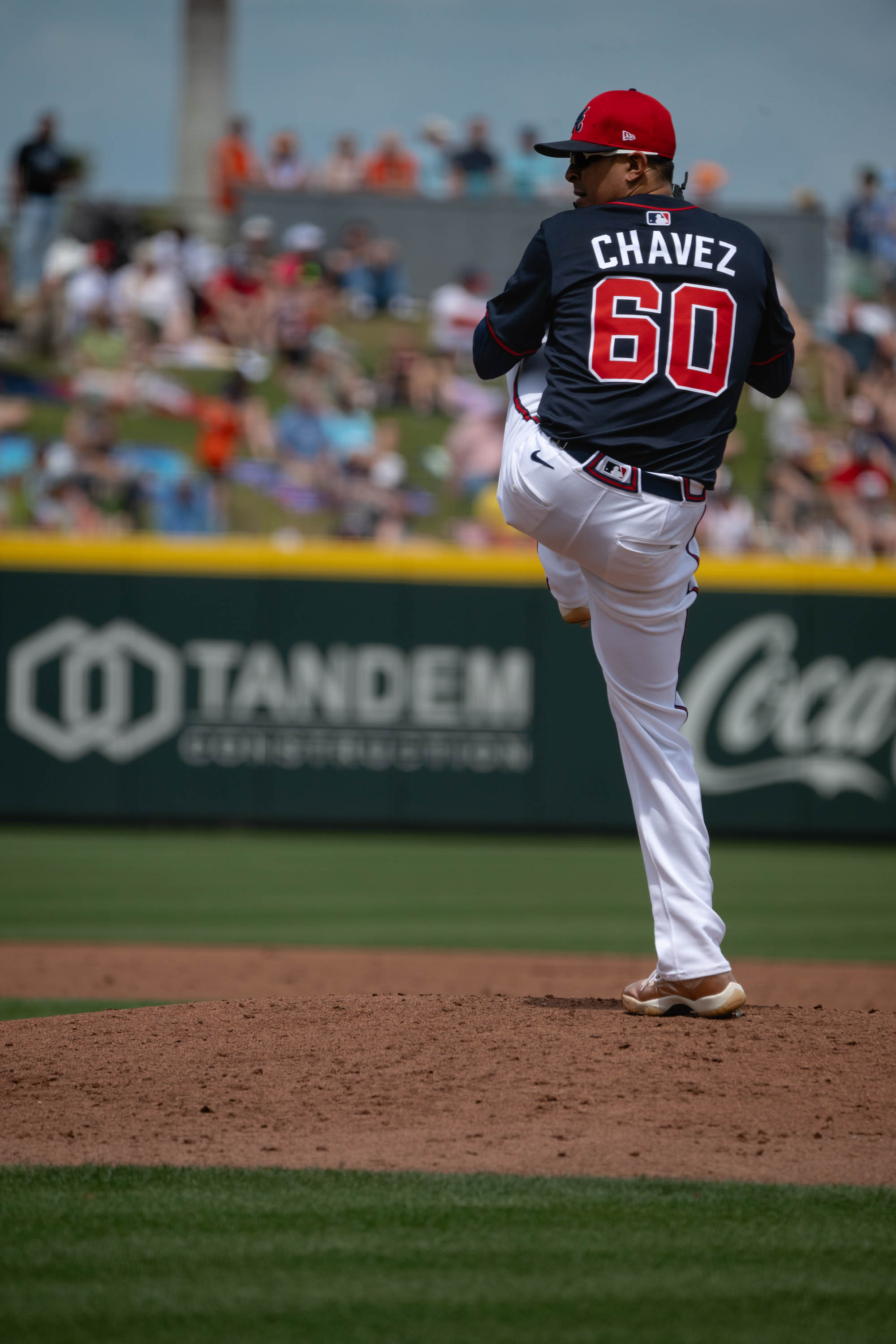
To make it to the Major Leagues, a player must surpass all five levels of the Minor Leagues, each becoming successively more and more difficult. Out of the thousands of minor league players, roughly 10 percent will ever play a single game in the Major Leagues. Even fewer will stick. Top prospect Jackson Holliday is hoping that this year he will be one of the few to stick. If pressure makes diamonds, well, then Holliday is hoping that it’ll turn him into a Swarovski crystal. The son of seven-time All-Star Matt Holliday, the 21-year-old shortstop/second baseman was taken first overall in the 2022 MLB Draft, signing for a whopping $8.19 million, the largest ever signing bonus for a high school player. The investment was for good reason—Holliday is touted as a true five-tool prospect, capable of excelling in all five core areas of the game: hitting for average, hitting for power, speed, throwing and fielding. Holliday flew through the minor leagues, making his big league debut in 2024, but the youngster struggled initially, earning a demotion to Triple-A before being called back up to Baltimore on July 31, 2024. Across 60 games in his first MLB campaign, Holliday hit just .189, striking out 69 times. This spring, Holliday has come back to Sarasota with a vengeance, hitting .333 while filling in at shortstop for the Orioles’ injured star Gunnar Henderson.
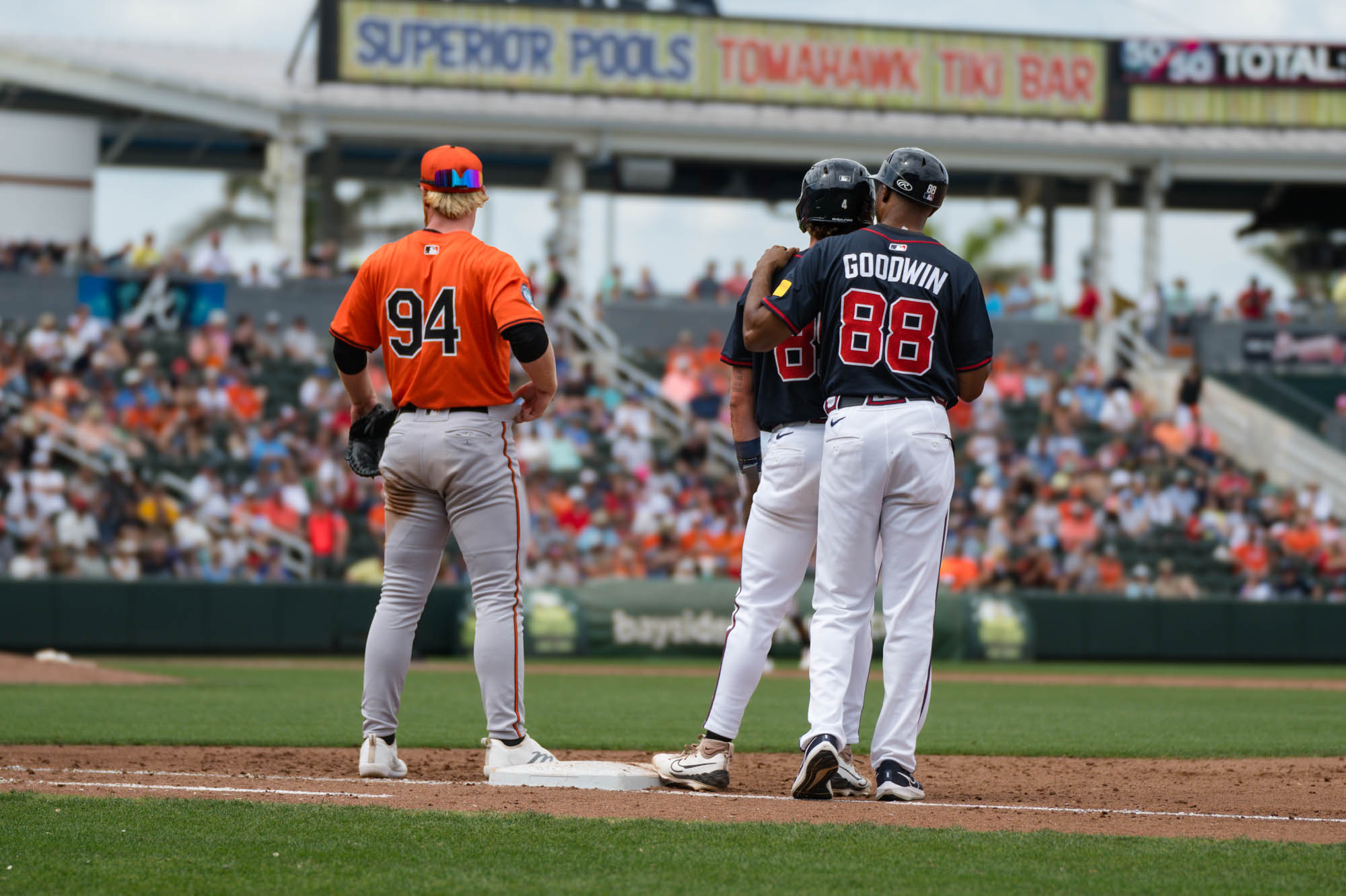
It’s the top of the 5th and the Orioles are at the plate, nursing a 4-3 lead. On the mound for the Braves is 26-year-old Ian Anderson, the third overall pick in the 2016 MLB Draft and a member of the Braves’ 2021 world championship team. Anderson is at a crossroads in his own career—after finishing fifth in the 2021 National League Rookie of the Year voting, Anderson struggled in 2022, eventually being demoted to the minors in early August. Tommy John surgery robbed him of his 2023 season and he spent all of 2024 rehabbing in the minor leagues. Here he found himself on the mound in CoolToday Park, with two outs and runners on first and third, trying desperately to get out of the inning when Jackson Holliday steps up to the plate. Holliday takes a strike on the inner half of the plate, then sees two balls outside of the zone, before whiffing on strike two. 2-2. He fouls off a potential strike three and Anderson’s next pitch misses inside. 3-2. Anderson sets, winds and fires. Holliday smokes the pitch into right field for a single, driving in the runner on third base. Orioles 5. Braves 3. It’s a win for the youngster and a loss for Anderson, who just a few years before was in Holliday’s cleats, an ascendant talent ready to cement himself as a big league star. “If I can carry what I’ve done in the spring (into the regular season), I’d be very happy,” said Jackson of his approach at the plate. “I’d be happy with low line drives, hard hit ground balls, doubles, triples. I’ve been very happy with the at-bats this spring; I thought today was good, facing a kind of funky righty and then a guy with a good change-up.”
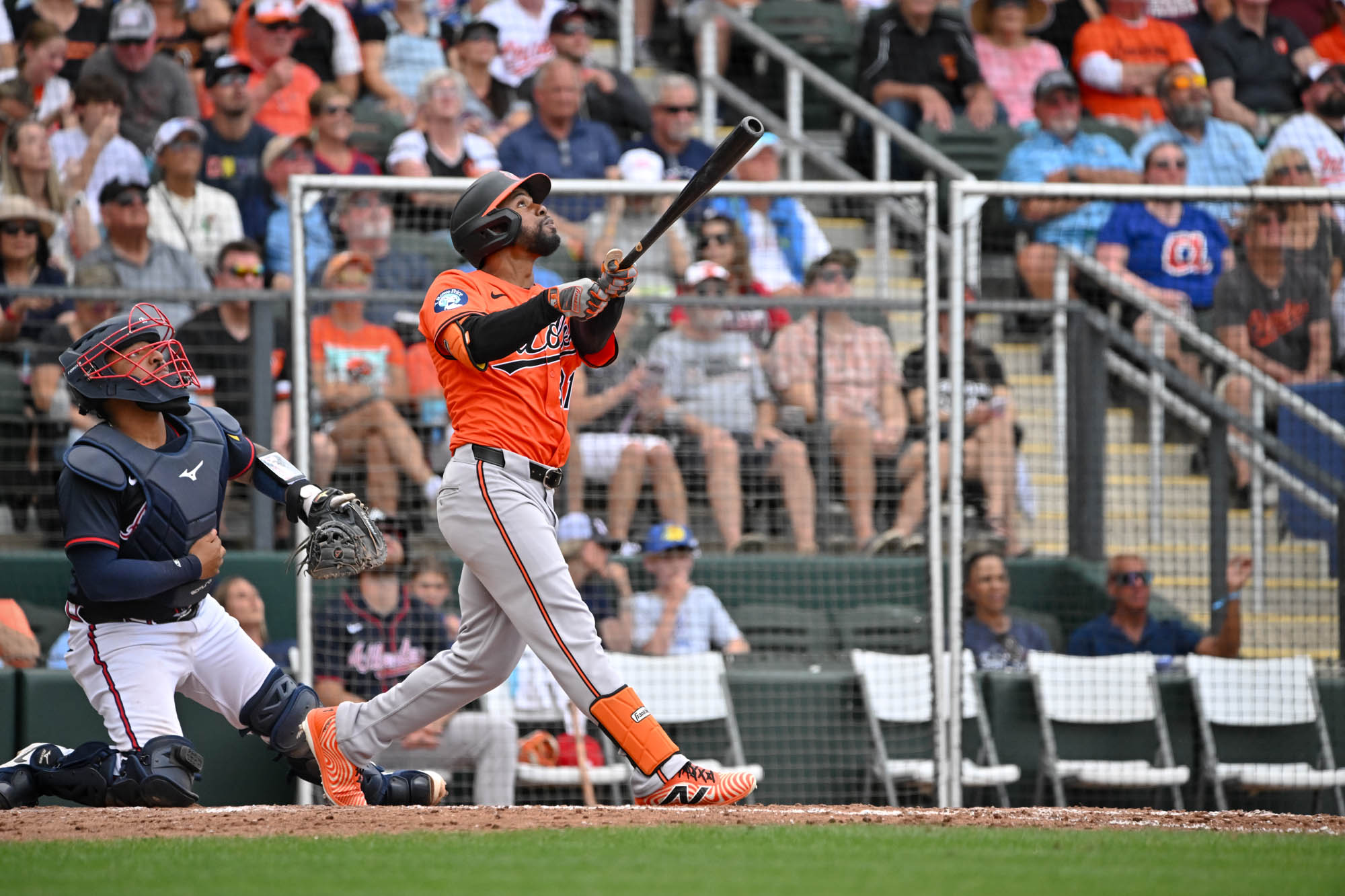
Anderson would be traded to the Los Angeles Angels later that afternoon. Four days after the game, Holliday was starting at shortstop for the Orioles on MLB’s Opening Day. Such is the transient nature of baseball. Storylines such as these run amok in Spring Training, where the career minor leaguer making less money than your hairstylist will square off against a superstar signed to a contract worth hundreds of millions. On the dirt of the diamond, however, they are made equal.
IN THE STANDS
Nine of the 13 stadiums in the Grapefruit League were built before the 21st century. CoolToday Park is not one of them. The ballpark is the newest in the Grapefruit League, having opened in 2019, and is a shining example of contemporary stadium architecture.
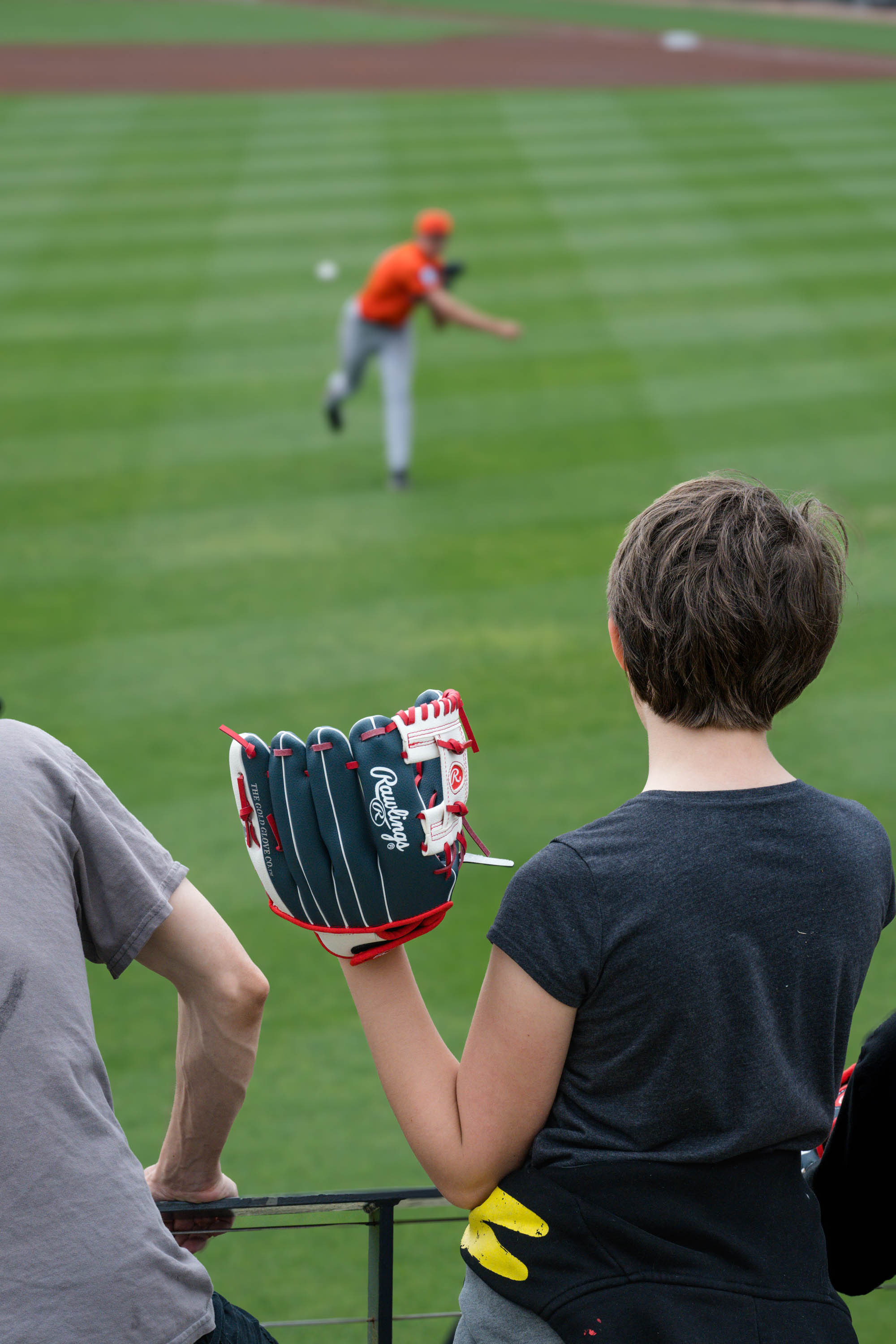
Large red metal numbers of heralded Braves line the walkway to the stadium where sleek glass and metal walls entomb a space that rivals most Major League parks. The smell of popcorn and sausages wafts through the wide, wood-ceilinged concourse that wraps around the 6,200 fixed seats.
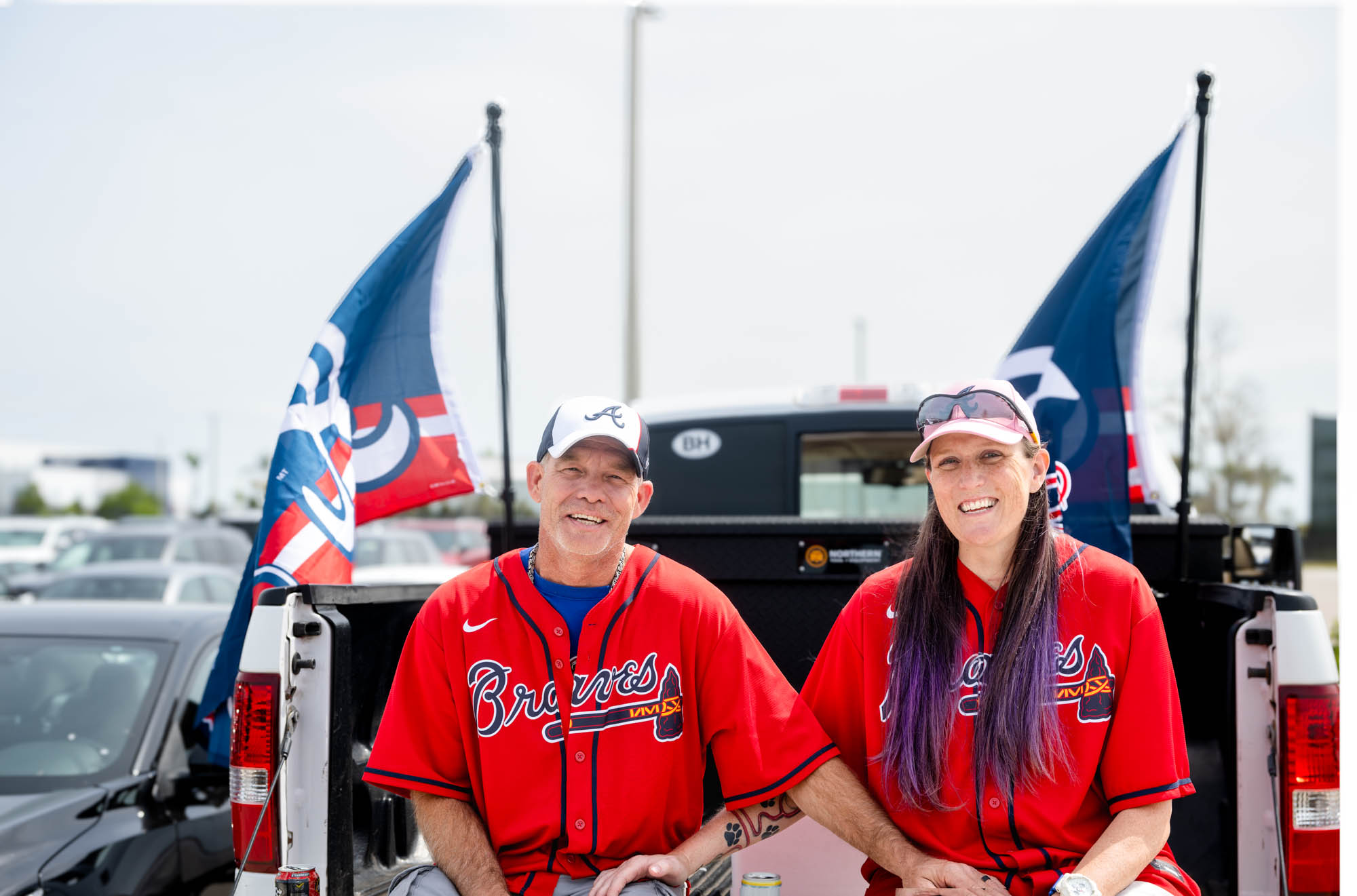
Walk along the first base line out to right field, where an open patio gives a full view of the verdant green field. It is there where you’ll find the design nods to other Grapefruit League stadiums—the clubhouse behind the right field fence reminiscent of Charlotte Sports Park and the grandstand in center field, a nod to Bradenton’s LECOM Park, under which fans can look straight into the Braves’ bullpen. Continue on towards left field, where a grassy berm, situated smack dab in home run territory, offers some of the best seats in the house. Beyond the berm is a left-field tiki bar, similar to that of Clearwater’s BayCare Ball Park. CoolToday Park is so starkly modern, so reminiscent of a contemporary MLB stadium that it should come as no surprise that the outfield dimensions mirror that of the Braves’ home in Atlanta, Truist Park.
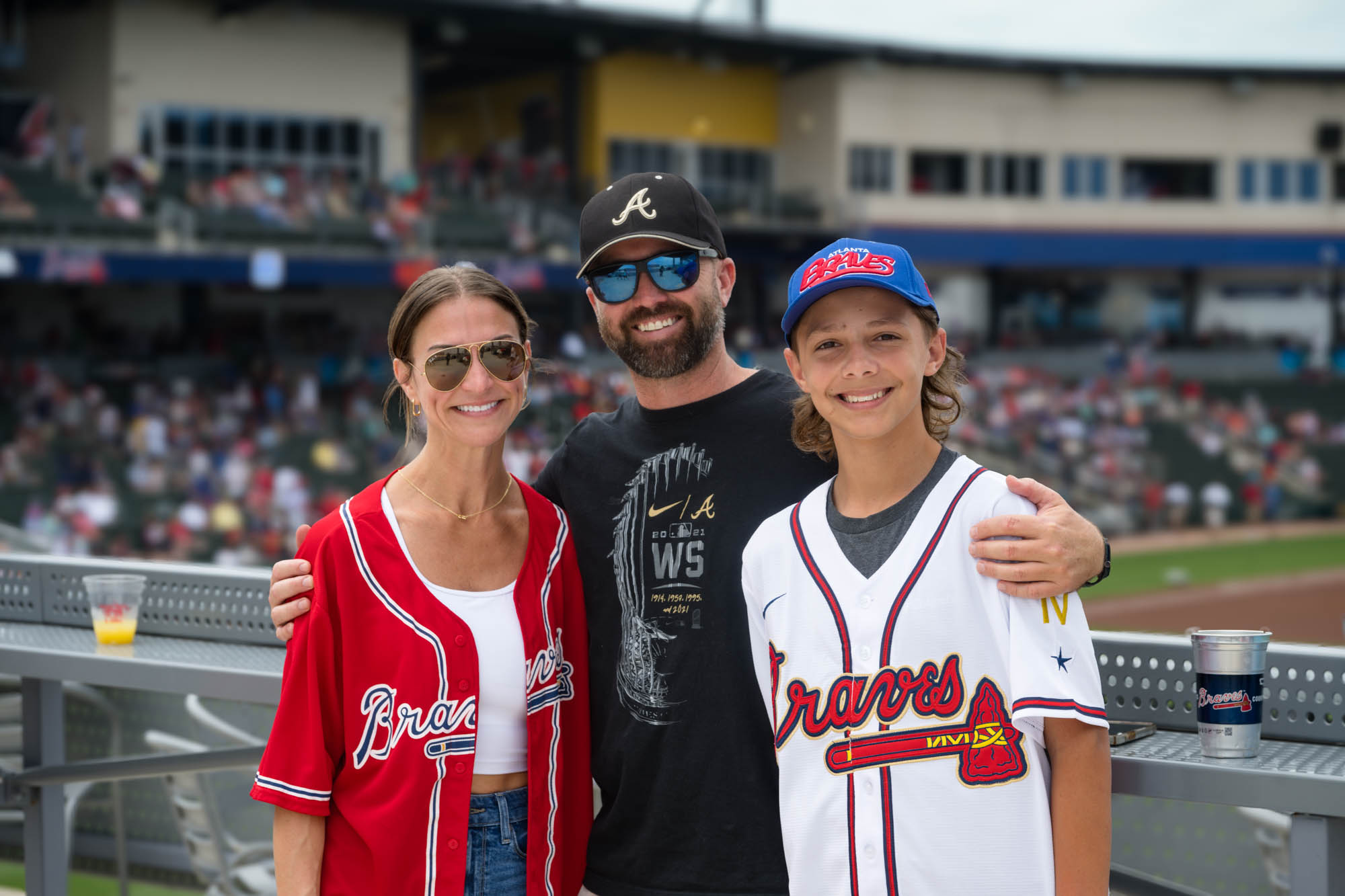
Some thirty miles north in the heart of Sarasota lies Ed Smith stadium, Spring Training home of the Orioles. Where CoolToday Park relishes in the contemporary, Ed Smith Stadium flourishes in the aesthetics of old Florida, with a turn of the century, Spanish-colonial inspired design, courtesy of a major renovation in 2011. Wrapped in tan walls, topped with red-tiled roofing, entering Ed Smith stadium through the wrought iron home plate gates feels akin to walking into The Ringling Museum—everything in the stadium, from the white columns holding up the multi-leveled concourse to the forest green seats that make up the grandstands fits perfectly in the look and feel of Sarasota.
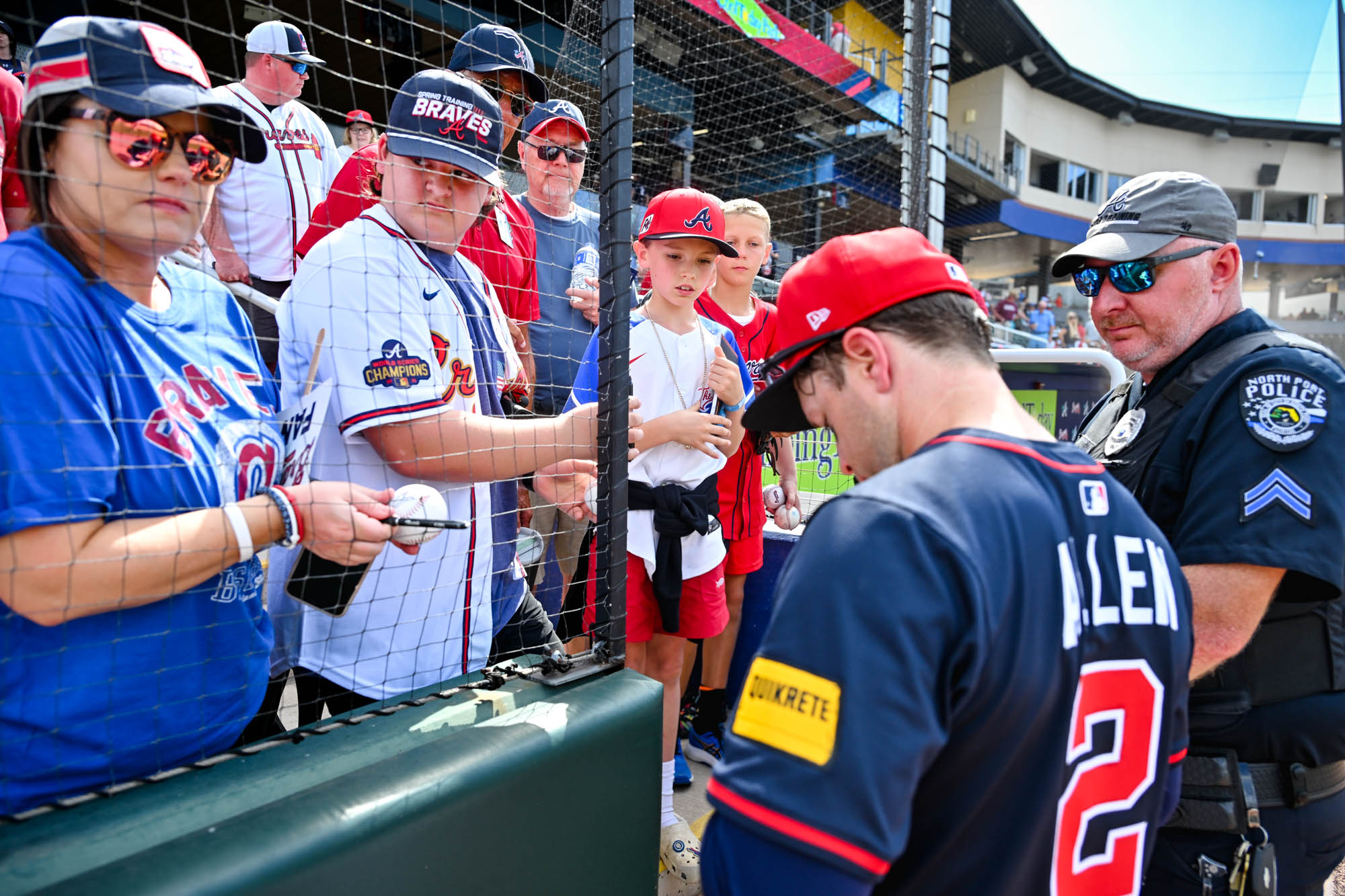
The stadium’s impressive structure, however, with refurbished seats taken from the Orioles’ home park in Baltimore, is designed to pull the fan’s attention towards the field. Eye-level access is easy at Ed Smith Stadium—a quick jaunt to section 125 puts you practically on the field, where players like Orioles’ top prospect Heston Kjerstad can be found. For those who can brave the sun, the left field pavilion is the place to be. Fans can sit directly above left field’s short wall, just feet away from the grass, where home runs fall like summer showers in the Sunshine state. Not to worry, a bar sits directly behind the section if home run watchers feel the need to wet their beaks.
THE BACKSTOP
There are only four players in Major League history that have played 10 or more seasons exclusively for the Atlanta Braves. Bruce Benedict is one of them. From 1978 to 1989 Benedict served as the backstop for the Braves, and for much of that time, was the pinnacle of defensive excellence at catcher. Benedict made the National League All-Star team twice, first in 1981 when he led N.L. catchers with 73 assists and 48 baserunners caught stealing and in ‘83 when he hit a career high .298 and finished second in the N.L. in fielding percentage.
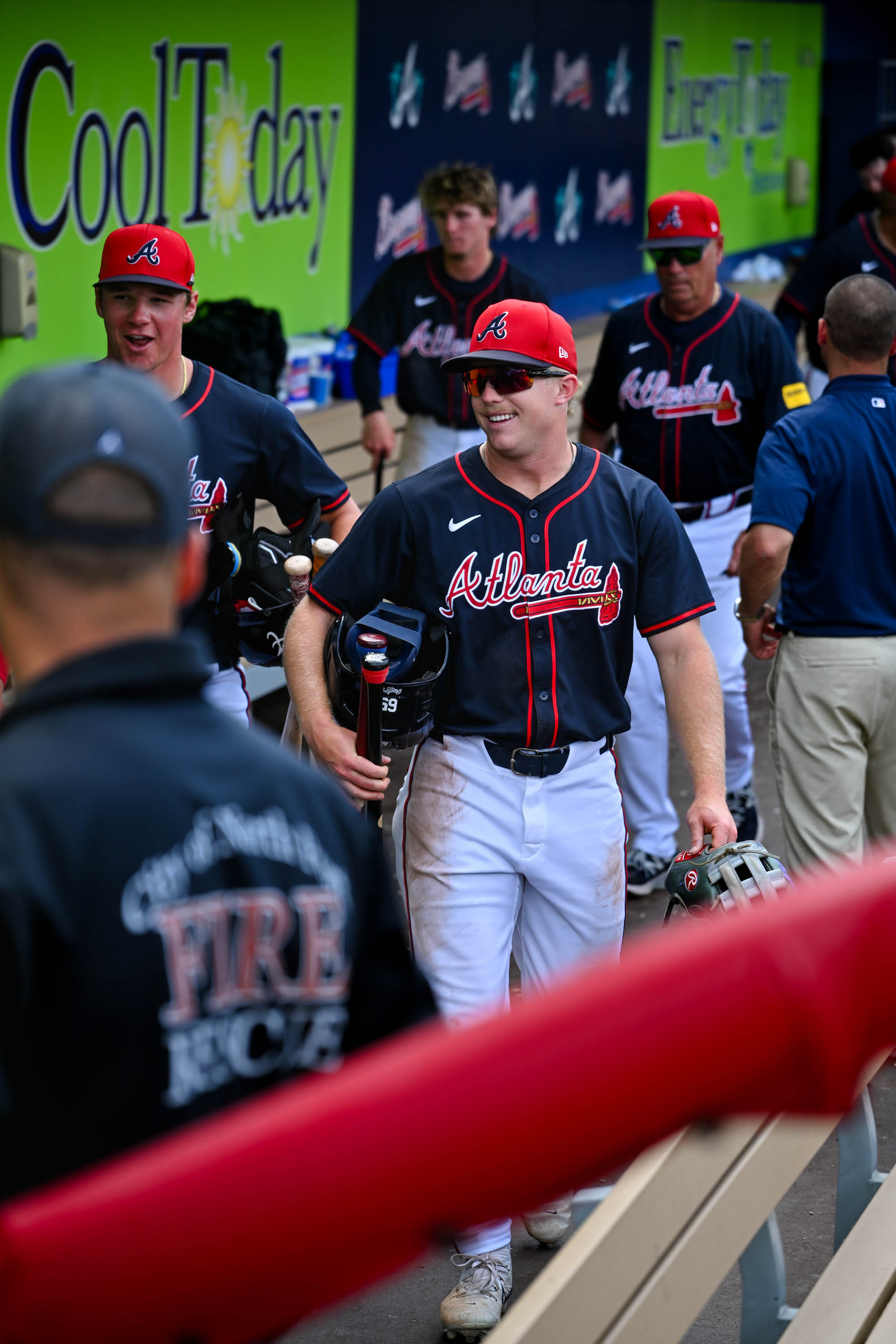
“To play in the All-Star game was a magnificent, wonderful treat,” says Benedict. “To look around and see multiple Hall of Fame players on the field and know that just for tonight, you were part of the same team was special.” The 982 games that Benedict played for the Braves would be filled with other highlights, like a regular-season game in 1982, when he set a MLB record by throwing out three baserunners in one inning. There was no bigger highlight, however, for Benedict than putting on his Braves’ uniform. When he attends Braves Fantasy Camp at CoolToday Park every winter, he puts it on once again. “I put my uniform on at 6:30 in the morning and don’t take it off until I absolutely have to,” says Benedict. “It’s an honor and a privilege to wear a Major League uniform. Professional baseball changed my life. It changed my childrens’ lives. It changed my grandchildren’s lives.”




